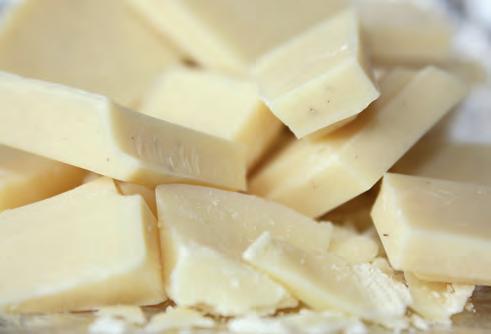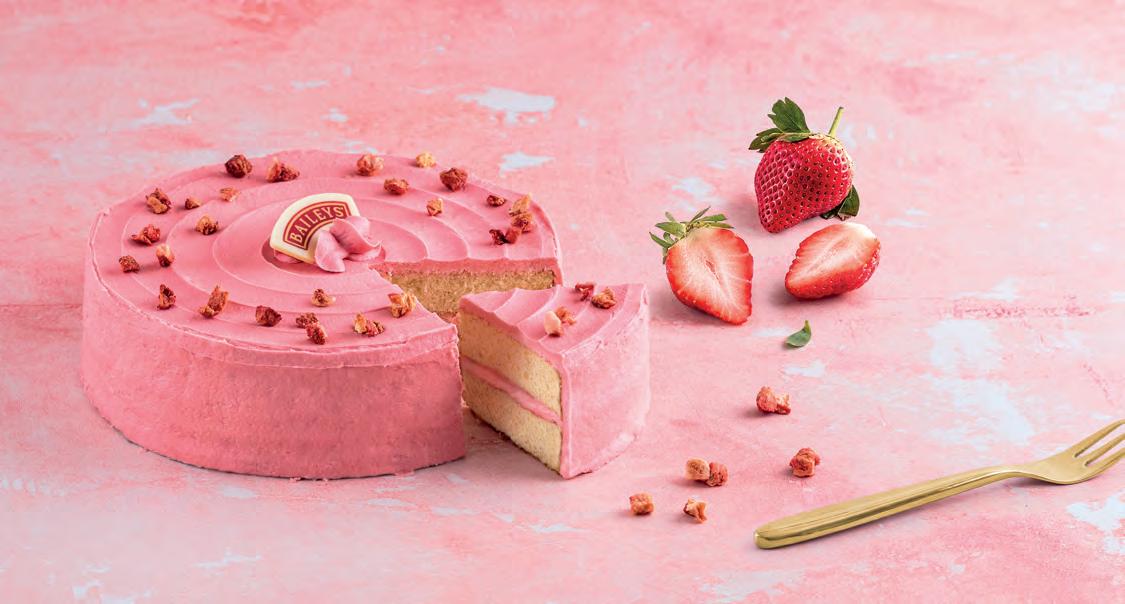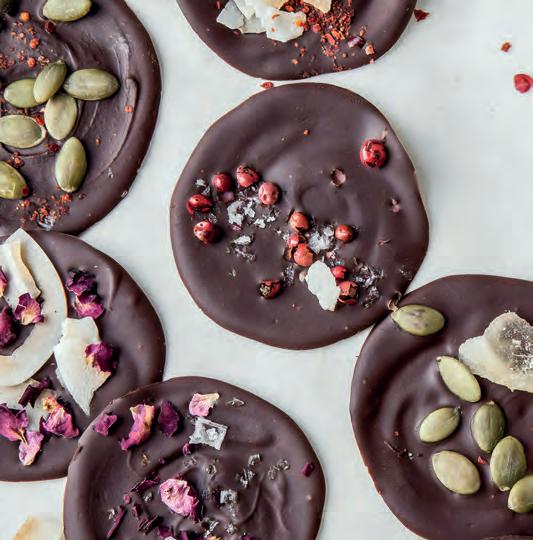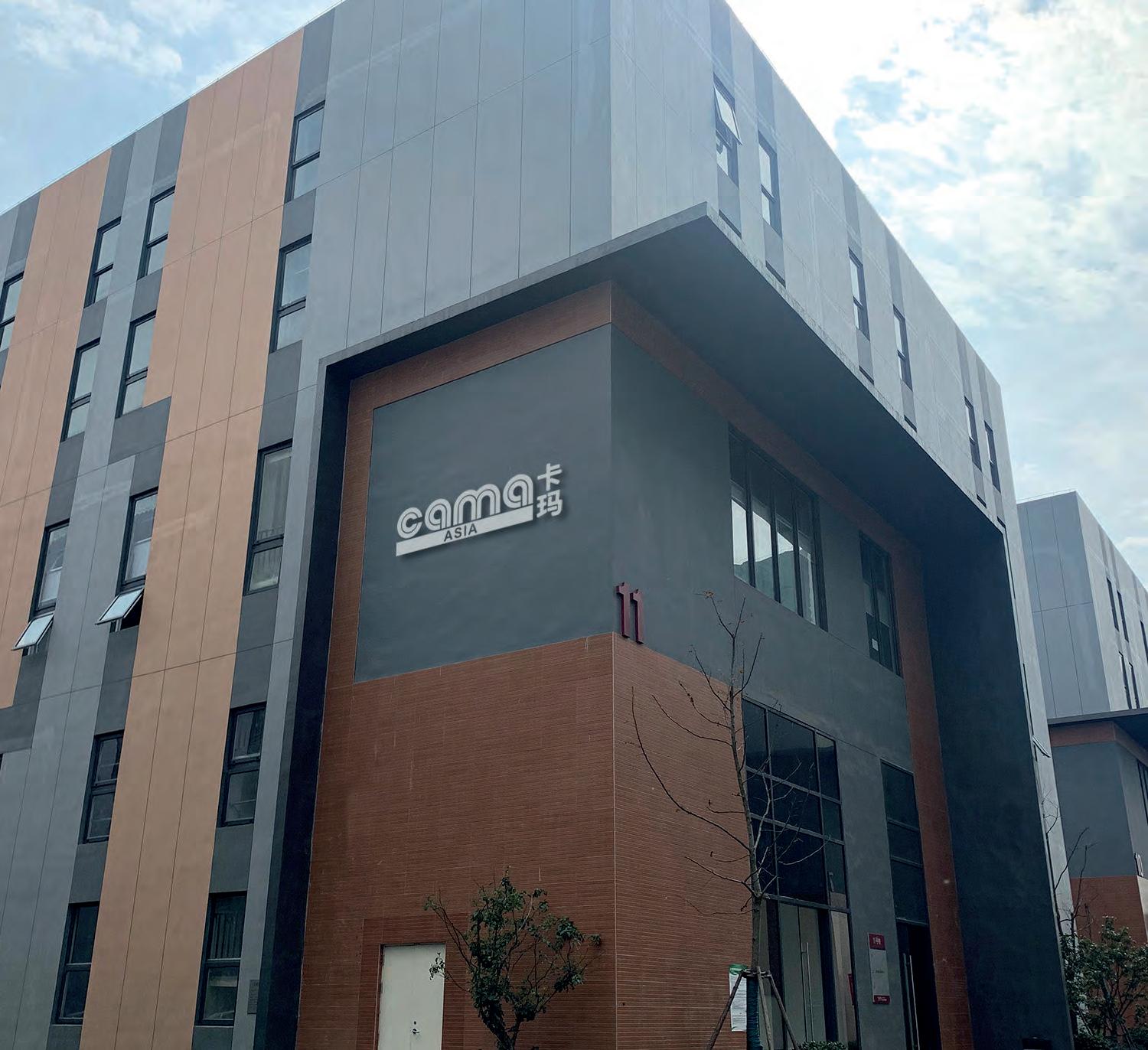
7 minute read
CHOC’ Your Own Way
Royal Duyvis Wiener optimises production processes by supplying new equipment and upgrading existing plants for the global cocoa and chocolate processing industry. Technology Manager, Roy Smith, has provided his insight on the company’s three signature ways of making chocolate and how new techniques, flavours and ingredients are being utilised for today’s consumers.

Advertisement
Man pic: From raw beans to liquor, cocoa powder & butter, Duyvis supply integrated lines continuous for the processing of pure chocolate.
What could be a more popular snack than chocolate?
In new and also traditional markets, chocolate consumption keeps growing. New combinations of flavours and ingredients find their way into the supermarket and subsequently towards the customers. Just look at the enormous increase of vegan chocolate, for example, which is more and more popular amongst the young generation.
For the record, when talking about chocolate in this article, I also mean compound, which is not just a cheap alternative for chocolate. Today, many highend compounds are on par with chocolate, so when reading ‘chocolate’, I mean ‘compound’ as well. Let me introduce the possibilities Royal Duyvis Wiener offers for making chocolate - our systems allow you to choose the production method best suited for your chocolate. Duyvis Wiener is already well known in the industry for the quality equipment in the cocoa, chocolate and compound industries. Royal Duyvis Wiener understands as no other that making a good chocolate has its challenges. Because of that we offer three processing solutions so you can “CHOC” your own way!
The three “Royal Duyvis Wiener ways” of making chocolate
Traditional chocolate process: Mixing ingredients
Ingredients are mixed in a paddle mixer – the paddles add a lot of energy, allowing intense mixing of the ingredients, even at a low-fat content, resulting in a good ‘wetting’ and breaking of small lumps. The chocolate mass is fed to the pre-refiner for the first refining step, critical for efficient downstream processing. Particles are refined and agglomerates are broken by passing through two rolls. The gap between the rolls determines the particle size. Fat from milk and cocoa will become more available and particles are wetted. After pre-refining, the chocolate mass is fed to a five-roll refiner. With each pass between the rolls, the particles are refined further to the final particle size. The rolls are pushed together with high pressure to control the fineness. Each consecutive roll has a higher speed to take the mass from the previous roll and bring it up to the next. On the last roll the mass is scraped off as ‘refiner flake.’ The refiner flake is transported over belts to fill the conch and after filling, the conch cycle starts. At Royal Duyvis Wiener, this is referred to as “dry conching.” The cycle is divided in three steps: dry -, plastic - and liquid conching. During the dry conching, the refiner flakes are scooped around. The flakes have a big surface and by scooping them around, air is in intense contact with the refiner flakes, throughout the whole conch vessel. The intense contact with air, the open structure of the particles and limited amount of fat, ensure an optimum removal of moisture and un-desirable volatiles. This results in an optimal flavour development.
After this step, the ‘plastic conching’ phase starts. By adding a little fat, the chocolate becomes viscous. The Royal Duyvis Wiener conche applies a lot of shear and under this high amount of energy, agglomerates are further broken and there is enough fat to coat all particles.
After adding the remaining fat, the chocolate becomes less viscous: this final and ‘liquid phase’. The chocolate is ‘smeared’ along the conch wall, like a pallet-knife, over the full length of the conche. With the number of conche elements, a big surface with each turn is covered in the conche, ensuring a significant impact during this step. Ingredients are evenly dispersed in the mass and chocolate solids reagglomeration is prevented. Traditional chocolate processing requires knowledge and skills to produce a quality chocolate. To achieve the right fineness, the refiners are connected to each other for speed and gap size control. The refiner flakes have the perfect structure for a long dry phase in the conche which is key for optimum rheology properties and flavour of the chocolate.

Above: Duyvis’ melting process of chocolate blocks starts on the melting grid and is continued inside a jacketed tank.
QCHOC
A value proposition of Royal Duyvis Wiener to the traditional processing, is the QCHOC system. In this system, a unique alternative for conching is applied. Chocolate, after refining, undergoes the same stages as in traditional conching, but yet differently. Shear is applied with centrifugal forces and increased surfaces combined with forced hot air, removing moisture and volatiles. This can be set up in a batch or in a continuous process. Mixing in this system is done in a mixer with counter rotating double mix arms; an intense mixing step of ingredients with a fat content of 30% or more. The vertical ball mills take care of the refining of the chocolate. A proven system to get to the right fineness of the chocolate in a most efficient way. To finish, the chocolate is pumped over an alternative conche to develop the required flavour. You can already produce chocolate with, for example, one mixer, a ball mill and a tank with a Batch Liquid Conche. Adding tanks and ball mills allows for an increased capacity without changing your chocolate’s unique characteristics.
ChocoLean
The final system combines best of both worlds - the ChocoLean. The same conche used for the traditional process is moved to the front of this process - ingredients are mixed and dosed in the conche. After filling and mixing the coarse ingredients, the conching process starts.
It is important to understand that using a traditional dry conche guarantees the best flavour development possible. Settings for the intense dry phase, plastic and liquid conching are similar to the traditional method and ensure the main characteristics: a well-developed intense chocolate flavour. When the conche cycle is finished and the desired recipe is made, the chocolate is pumped through ball mills for refining. Flexibility is very important for today’s chocolate producers. Starting with a batch system, which can be extended to increase output, up to a continuous line - it is all possible with the ChocoLean. Whether you are standardized on horizontal or vertical ball mills, both can be fitted in. With flavour as a key characteristic, what happens when comparing these three methods? Royal Duyvis Wiener has an impressive Technology Centre. A huge pilot plant for processing cocoa, chocolate, nuts and seeds. Comparative trials were performed here on milk and dark chocolates for flavor evaluation. The chocolates made, using our three methods, incorporate the same recipe and the same ingredients. Clearly the traditional process and the ChocoLean have a great flavour development. Using a similar recipe, the viscosity of the ChocoLean chocolate is a bit higher. The QCHOC chocolate is different in flavour, but this system suits another aspect of chocolate manufacturing and that is value added chocolate. Studies at Royal Duyvis Wiener continue to address the issues, to set the QCHOC for a more balanced flavour and to set the conche in such a way that rheology is similar. There is more on its way.
Author: Royal Duyvis Wiener B.V. Technology Manager, Mr. Roy Smith Email: rsmith@duyviswiener.com
COCOA LIQUOR
COCOA BUTTER
COCOA/MILK POWDER
SUGAR AND ADDITIVES MIXER
CONVEYOR BELT 2-ROLL REFINER
5-ROLL REFINER
HORIZONTAL BALL MILL INTERMEDIATE REFINING HORIZONTAL BALL MILL FINE REFINING CONVEYOR BELT
CONCHE STORAGE TANKS
MIXER/DRY CONCHE VERTICAL BALL MILL INTERMEDIATE REFINING STORAGE TANKS

VERTICAL BALL MILL FINE REFINING
HORIZONTAL BALL MILL INTERMEDIATE REFINING HORIZONTAL BALL MILL FINE REFINING PUMPS
BATCH LIQUID CONCHE (BLC) PUMPS
QCHOC-400 (MIXER/BALL MILL/CONCHE) MIXER
VERTICAL BALL MILL
INTERMEDIATE REFINING VERTICAL BALL MILL FINE REFINING STORAGE TANKS CONTINUOUS LIQUID CONCHE (CLC)
CHOCOLATE PROCESSING
PUMPS







